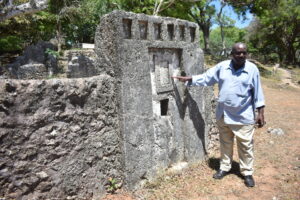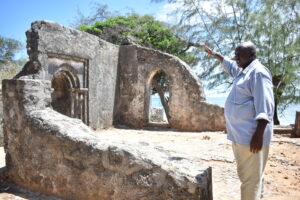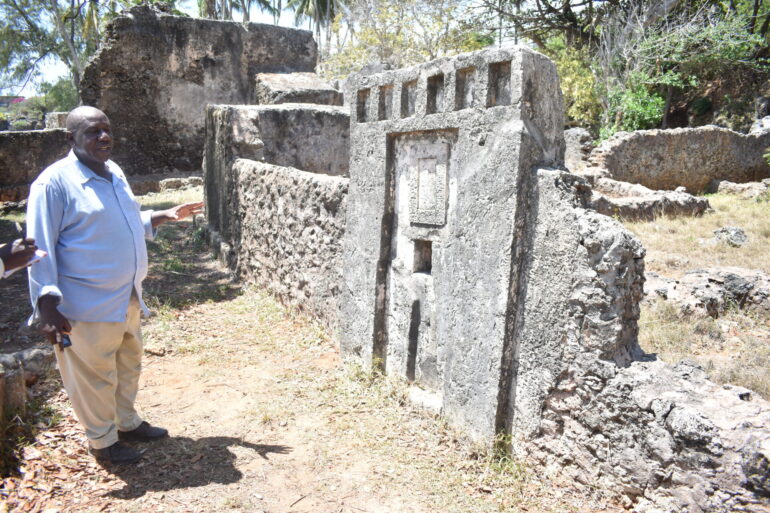Located 15 kilometers north of Mombasa off Mtwapa Town, Jumba La Mtwana, the ruins of the 14th-century Swahili settlement remain neglected and cry for maintenance.
A major tourist attraction In Kilifi County apart from Fort Jesus in Mombasa, Jumba La Mwatna (the large house of slaves), faces the risk of being swept into the sea, as well as the threat of falling trees destroying the sea’s remaining structures.
A seawall would be ideal to prevent the ruins from being washed into the sea by rising tides, but it will interfere with the sea turtles’ nesting areas, according to Hashim Mzombe, curator of Jumba La Mtwana.
The National Museum of Kenya is debating the construction of a seawall to prevent further destruction of the walls of the ruins during the high tides, but ecologists have expressed concern that such a structure might disrupt the ecosystem.
For its restoration, the Kenyan government set aside $1.3 million, but the work has not yet begun. Popularly known as Jumba Ruins is a reminder of the early Swahili history, including how they lived and the types of economic activities they engaged in at the time.
The location includes the remains of several houses, three mosques, and a tomb that is thought to belong to the Sultan who once ruled the area. The site was abandoned in the 15th century as they ran out of fresh water, diseases, and inter-community conflict.
The material used for the building was coral rocks and Jumba La Mtwana today is a popular picnic site, wedding parties, and study site for history students. The ruins are located close to the beach and many buildings that are seen today were excavated by James Kirman in 1972.
The town’s history is undocumented, but ceramic artifacts show that it was founded in the fourteenth century and abandoned in the first half of the same century. Still, it remains a must-visit for tourists visiting Kilifi County, especially those who want to experience the cool breeze of the sea in a generally hot environment.
What is unique about the site is that while a section of the foundation of the Grand Mosque of a 14th-century village, is slowly eroding into the sea as a result of rising sea levels, the Mihran—where the Iman leads the prayers—remains intact in all the three mosques.
Mr Mzombe explained that the Mihran is normally built with more enforcement than the rest of the mosques and that is why they have survived for 600 years.

Massive Baobab trees that are more than a century old and therapeutic neem trees coexist with overgrown grass and shrubs. Huge baobab trees that are over 1,000 years old or older still exist as key attractions to the site.
The 30-foot-deep larger well and the traditional African pot is still present in what is known as the House of Kitchen. These houses include the House of the Cylinder, The House of the Kitchen, The House of the Many Pools, which had three phases, and the Great Mosque. The inhabitants of this town were mainly Muslims as evidenced by a number of ruined mosques.
The site was probably chosen for settlement because of its strategic location, the availability of freshwater, and exposure to the cooling breezes from the north and southeast.
It was a safe location from external attacks by sea because it lacked a harbor, forcing larger vessels to anchor a long distance offshore or move, most likely in Mtwapa Creek.
According to historical records at the site that are posted on the walls of the administrative office, James Kirkman began clearing and excavating the ruins in 1972 with the goal of dating the buildings, determining their period of occupation, and consolidating buildings that were in danger of collapsing.

Jumba La Mtwana was designated a National Monument ten years later, in 1982. As a result, Jumba is legally protected under the Antiquities and Monuments Act, Chapter 215 of the Kenyan Laws.
By FRED OLUOCH

